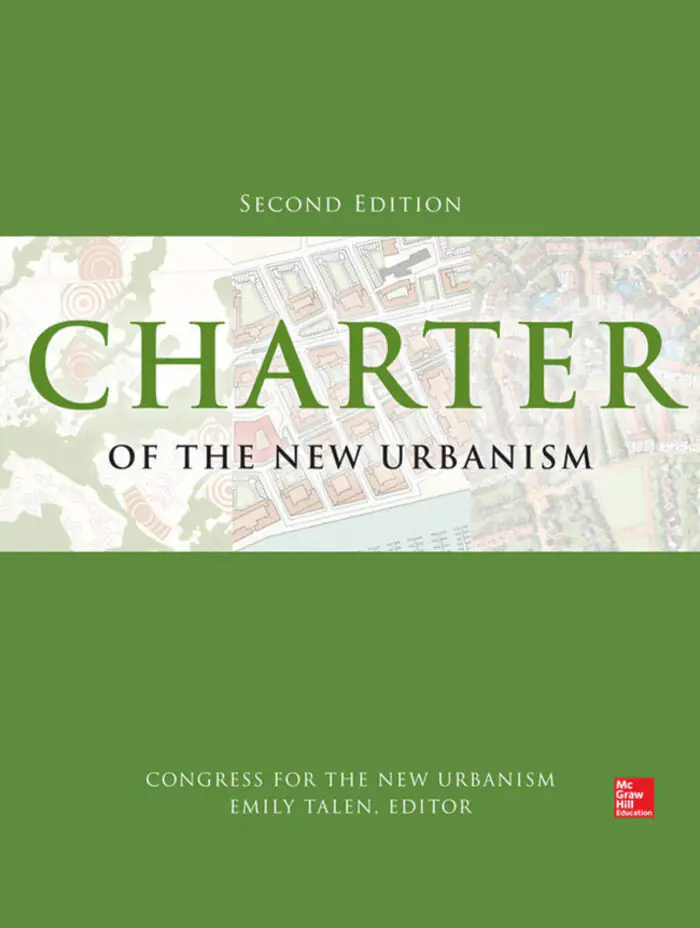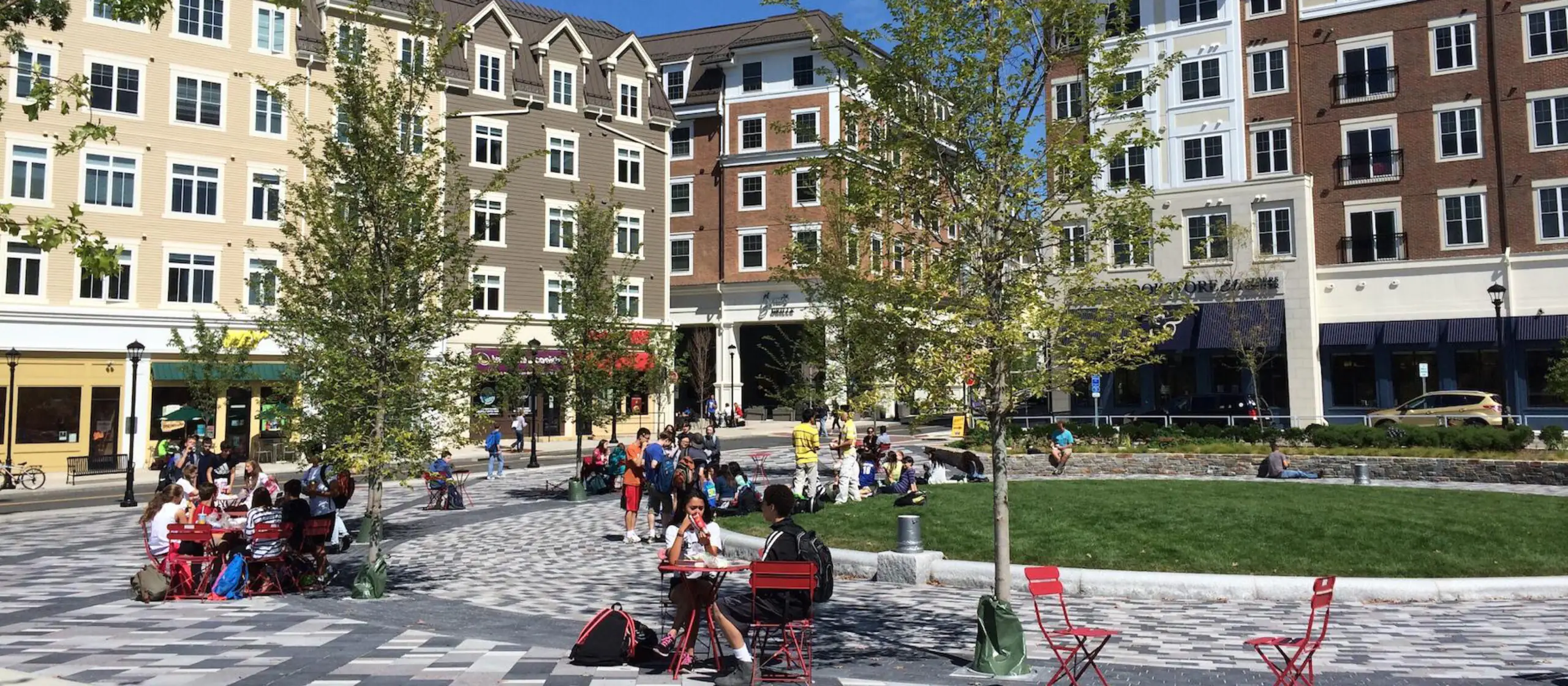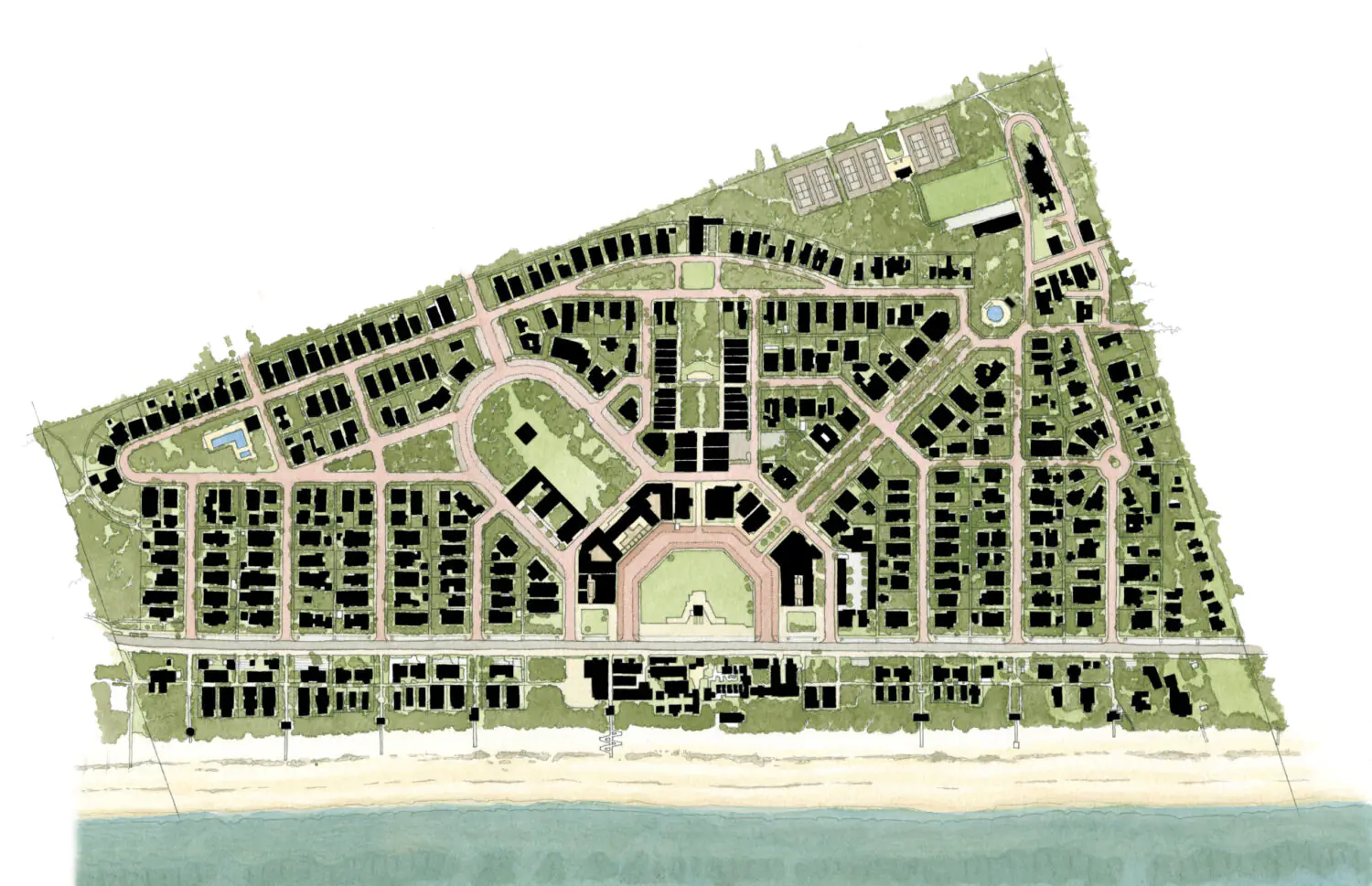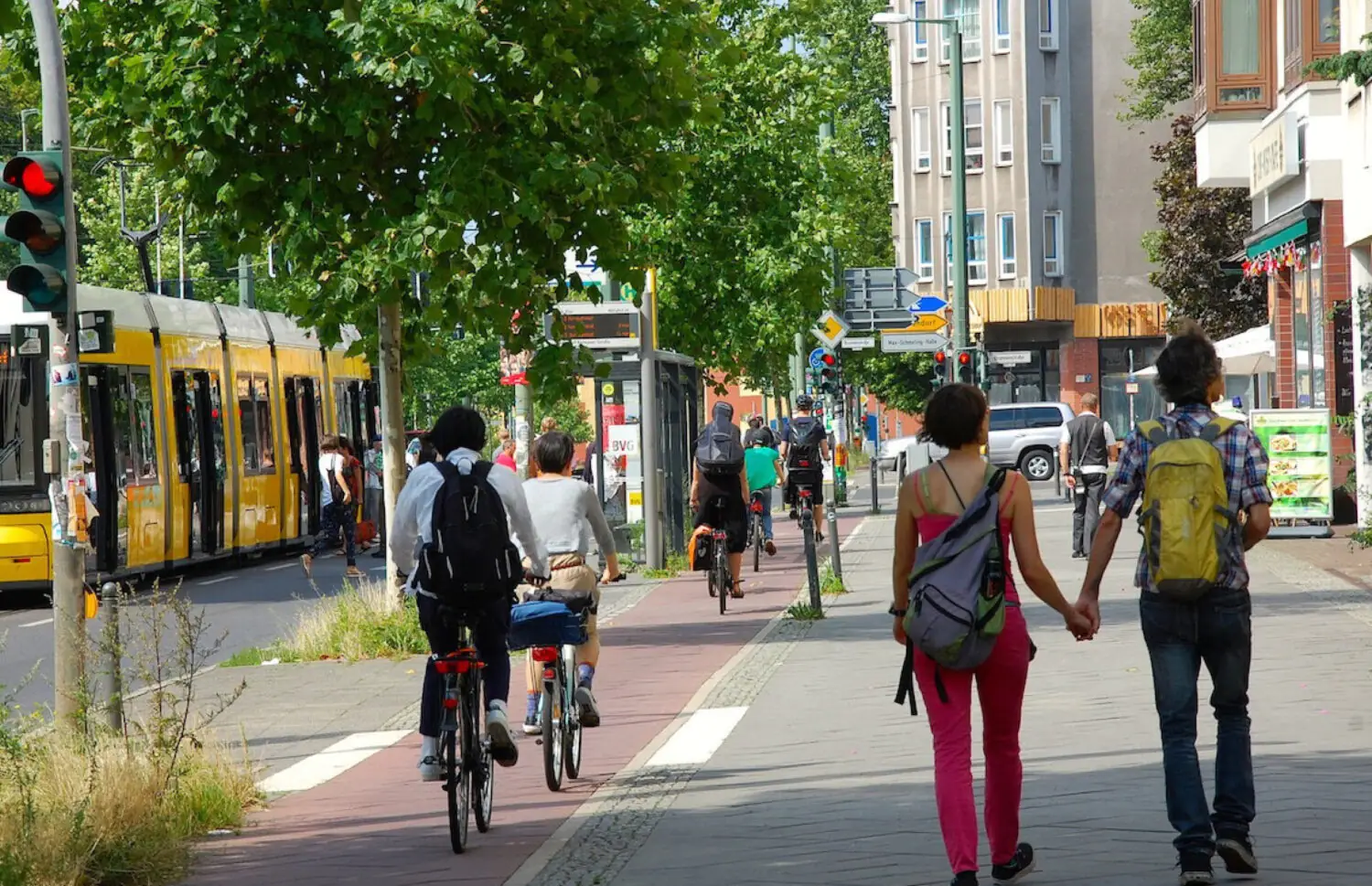
The concept of New Urbanism emerged at the end of the 20th century in the USA as a reaction to the realisation that traditional approaches to urban planning and land use were leading to the degradation of cities and the open spaces surrounding them.
In the mid-20th century America, where suburbia was actively built, faced Urban Sprawl: huge areas near megacities with one or two-storey houses, garages and lawns began to expand in a completely unpredictable way and deprive cities of the surrounding natural areas. Sprawl was characterised by the dispersal of residential and commercial development over long distances and the unwise use of land resources.

treehugger.com

unsplash.com
Like the concept of the 15-minute city, which emphasises minimising distances and people’s need for cars, the concept of New Urbanism also looks at increasing the compactness of the urban fabric as a way to create a sustainable urban environment.
André Duany and Elizabeth Plater-Zyberk, American urban planners, are recognised as the authors of the concept of New Urbanism, who designed the first city that fully conforms to its principles, Seaside in the state of Florida, in 1979. They also pioneered the basic principles of development which later became known as the Ahwanee Principles or Resource-Efficient Communities Principles.

yale2023.yale.edu

yale2023.yale.edu
In 1993, the concept was officially named New Urbanism when the Congress of New Urbanism (CNU) was established. A major milestone was the creation and ratification of the Charter for New Urbanism in 1996, which has had a significant impact on urban planning, design and development worldwide and has been translated into 12 languages.

globalurban.org

amazon.com
New Urbanism cities do not have strict regulation and style, but they do have certain principles of layout and amenity, the main ones being diversity and high density of development and functions, pedestrian accessibility and connectivity, and high-quality architecture and public spaces.

New Urbanism cities do not have strict regulation and style, but they do have certain principles of layout and amenity, the main ones being diversity and high density of development and functions, pedestrian accessibility and connectivity, and high-quality architecture and public spaces.
Followers of New Urbanism propose to focus on the way cities and towns have been built over the last few centuries: walkable neighbourhoods and streets, housing and shops in close proximity, and accessible public spaces. In other words: New Urbanism focuses on urban design at the human scale.















